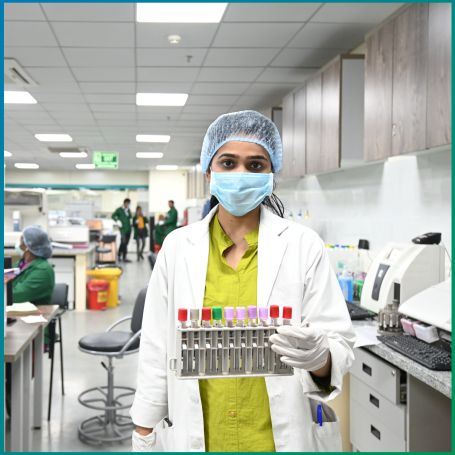
C/S Water (Culture and Sensitivity of Water) is a laboratory test that detects and identifies microorganisms, such as bacteria or fungi, in water samples.

The C/S Water test, also known as Culture and Sensitivity of Water, is a laboratory analysis used to detect the presence of bacteria or other microorganisms in water samples. This test is crucial for assessing the safety and quality of water, especially for drinking and recreational use. It helps identify pathogens that may pose health risks to humans and can also be applied in various industrial and environmental settings.
Public Health Safety: Ensures that water supplies are free from harmful microorganisms that can cause diseases. Regular testing helps prevent outbreaks of waterborne illnesses.
Regulatory Compliance: Many countries have regulations requiring routine testing of water sources to maintain public health standards. Compliance with these regulations is vital for municipal water systems and bottled water producers.
Environmental Monitoring: Helps in assessing the quality of natural water bodies and understanding the impact of pollution on aquatic ecosystems.
Treatment Efficacy: Evaluate the effectiveness of water treatment processes in eliminating harmful microorganisms, and ensuring safe drinking water for communities.
The C/S Water test typically identifies a range of microorganisms, including:
Bacteria: Such as E. coli, Salmonella, and Vibrio cholera.
Viruses: Including norovirus and rotavirus.
Protozoa: Such as Giardia and Cryptosporidium.
Fungi: In some cases, molds and yeasts may also be detected.
Sample Collection: Water samples are collected in sterile containers to avoid contamination.
Incubation: The samples are then incubated under controlled conditions to allow any microorganisms present to grow.
Isolation and Identification: After incubation, cultures are isolated, and specific tests are performed to identify the types of microorganisms.
Sensitivity Testing: The isolated microorganisms are tested against various antibiotics to determine their sensitivity, helping guide treatment in case of contamination.
Negative Result: Indicates that no harmful microorganisms were detected, suggesting the water is safe for use.
Positive Result: Indicates the presence of pathogens, requiring immediate action to address contamination, including potential water treatment or public health advisories.
The C/S Water test is essential for various entities, including:
Municipal Water Authorities: To ensure the safety of public water supplies.
Bottled Water Companies: For quality assurance and regulatory compliance.
Swimming Pools and Recreational Facilities: To monitor water quality and prevent outbreaks.
Environmental Agencies: To assess the health of natural water bodies and the effects of pollution.
Healthcare Facilities: To ensure safe water for patients and staff.
When it comes to ensuring the safety of your water supply, Diagnopein Diagnostic Center in Pune offers the following advantages:
A)NABL-Certified Laboratory: Our laboratory is accredited by the National Accreditation Board for Testing and Calibration Laboratories (NABL), ensuring compliance with national and international testing standards.
B)Advanced Technology: We utilize advanced laboratory equipment and techniques for accurate and reliable results.
C)Experienced Staff: Our team comprises skilled professionals with expertise in microbiology and water testing, ensuring precise analysis and interpretation.
D)Timely Results: We understand the urgency of water testing. Our processes are designed to deliver quick and reliable results without compromising quality.
E)Comprehensive Reporting: We provide detailed reports, including the types of microorganisms detected and recommended actions based on the findings.
F)Affordable Pricing: Our testing services are competitively priced, ensuring quality testing is accessible to all.
G)Clean and Hygienic Environment: We prioritize cleanliness and hygiene in our laboratory, ensuring the safe handling of all samples.
1. Culture Method
2. Sample
3. Colony Count
4. Organism(s) Isolated
5. Culture Report: Culture yields growth of
6. Culture isolated after 7 days :
7. Culture isolated after 14 days:
8. Culture isolated after 21 days:
9. Ampicillin
10. Amikacin
11. Amoxicillin clavulanate
12. cefoperazon+sulbactam
13. Cefuroxime
14. Cefepime
15. Cefotaxime
16. Ciprofloxacin
17. Ertapenem
18. Gentamicin
19. Imipenem
20. Meropenem
21. Norfloxacin
22. Nitrofurantoin
23. Piperacillin-tazobactam
24. Trimethoprim-Sulfamethoxazole (Cotrimoxazole)
The frequency of testing depends on the source of water. Municipal systems typically test monthly, while private wells may require annual testing.
Consult local health authorities for guidance on how to address contamination and ensure water safety.
Yes, the testing protocols may vary based on the water source, such as drinking water, recreational water, or industrial use.
Yes, but it’s essential to follow proper collection procedures to avoid contamination. We provide guidelines for sample collection.